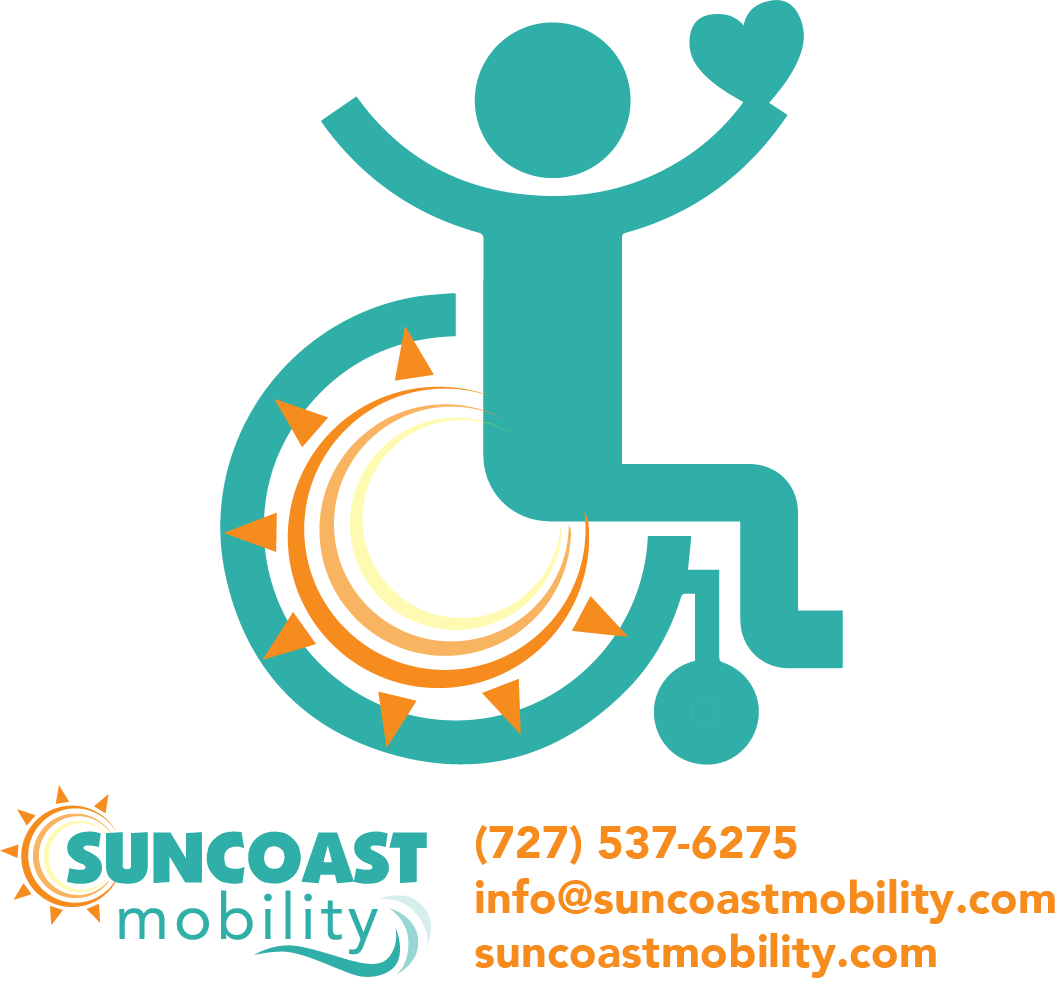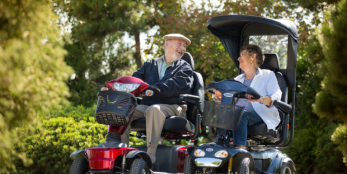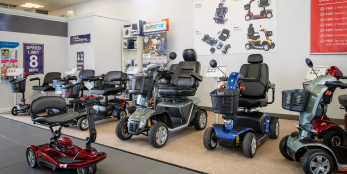Table of contents
Regulations Regarding the Use of Mobility Scooters on Public Roads in the United States
Mobility scooters are essential tools for millions of individuals with limited mobility across the United States. These devices, which are often used by people with disabilities, seniors, and those recovering from injuries, offer a degree of independence and mobility that significantly enhances their users' quality of life. They provide a means of transportation for daily activities, such as running errands, attending social events, and enjoying outdoor activities. However, the legal framework governing the use of mobility scooters on public roads varies significantly from one jurisdiction to another. In many areas, local regulations restrict or prohibit the use of mobility scooters on public streets. Understanding these rules is crucial for users to ensure they operate their scooters within the bounds of the law while maintaining safety.
The Varying Landscape of Mobility Scooter Regulations in the U.S.
In the United States, mobility scooter regulations are not uniform and can differ widely between states, cities, and even neighborhoods. While some regions may impose strict restrictions on where and how mobility scooters can be used, others offer more flexibility. Local governments have the authority to establish their own bylaws and rules concerning mobility scooter usage, resulting in a patchwork of laws that reflect the unique needs and concerns of each community.
For instance, certain cities may allow mobility scooters to be used on public roads only if specific conditions are met, such as limiting their maximum speed or requiring the scooters to be equipped with safety features like lights and horns. Conversely, other municipalities may prohibit mobility scooters from being used on public streets altogether, requiring users to rely on sidewalks or designated paths. In gated communities or specific neighborhoods, the rules may be even more tailored, with some areas permitting the use of scooters on side streets or private roads, while others impose even more restrictive regulations.
In general, local governments take into account factors like the scooter’s size, speed, and intended use when formulating these regulations. Additionally, urban areas with heavy traffic may impose stricter rules for safety reasons, whereas more rural or suburban areas may have more lenient policies. As a result, it is essential for individuals who rely on mobility scooters to be aware of and understand the specific rules in their locality, as failing to comply can lead to fines or other legal consequences.
Why Do Cities Impose Restrictions on Mobility Scooters?
One of the primary reasons cities and municipalities impose restrictions on the use of mobility scooters on public roads is safety. While mobility scooters are designed to help individuals with mobility challenges, they are not necessarily built for the rigors of road traffic. Unlike motor vehicles, mobility scooters are often slower and may lack certain safety features, such as seat belts or airbags, that are essential for protection in the event of an accident.
Most mobility scooters are considered pedestrian devices by municipalities, even though they can reach speeds of 5 to 15 miles per hour, depending on the model. Because of this, many cities classify mobility scooters as pedestrian vehicles, subjecting them to pedestrian laws rather than vehicle laws. For example, in many jurisdictions, individuals are required to operate their scooters on sidewalks and only cross streets at designated crosswalks.
For those individuals who require mobility scooters for more extended travel, local governments may allow the use of low-traffic streets or backroads. In such cases, users are often required to stay as far to the right side of the road as possible to avoid impeding the flow of regular traffic and to ensure their own safety. This ensures that mobility scooter users are not placed in potentially hazardous situations alongside faster-moving vehicles.
While these restrictions are designed with safety in mind, they can sometimes create challenges for scooter users, especially in urban areas with limited sidewalk access or poor infrastructure for mobility devices. As a result, people who use mobility scooters may find it difficult to access certain parts of town or engage in social and recreational activities, which can ultimately lead to isolation and a reduced quality of life.


Are There Street-Legal Mobility Scooters?
The growing demand for mobility scooters has driven significant advancements in scooter design. Modern mobility scooters have evolved from basic, utilitarian devices into sleek, high-performance machines with improved capabilities. Today’s mobility scooters are often designed with features similar to those found in recreational vehicles, with advanced suspension systems, longer battery life, and faster speeds.
Some newer models of mobility scooters can reach speeds of up to 15 miles per hour, which is fast enough for some local jurisdictions to classify them as "street-legal" vehicles, capable of operating on public roads. However, the criteria for being street-legal are not solely dependent on speed. Many municipalities impose additional requirements for scooters to be considered roadworthy, including the presence of key safety features like working lights, signals, effective brakes, and even reflective materials for visibility. These features are critical for ensuring that mobility scooter users can operate safely alongside motor vehicles on public roads.
Despite these advancements, not all mobility scooters are intended for road use. Many scooters, especially older or more basic models, are designed for short trips on sidewalks or designated paths and may not meet the criteria necessary for road operation. Even if a scooter meets the necessary specifications for road use, certain restrictions may still apply. For example, roadworthy scooters may be prohibited from using lanes designated for motor vehicles or from traveling in certain traffic lanes, such as turn lanes or high-speed roads.
Individuals interested in using their mobility scooters on public roads should thoroughly research the laws in their specific area before purchasing a scooter. Some regions may require specific types of mobility scooters with advanced features, while others may restrict scooter use altogether. For this reason, it is essential to understand the legal framework and ensure that the scooter complies with all applicable regulations.
Key Considerations Before Purchasing a Mobility Scooter
Before purchasing a mobility scooter, it is crucial to take into account a range of factors to ensure that the device will meet both personal needs and legal requirements. These considerations can include the type of terrain the scooter will be used on, the maximum distance it will need to travel on a single charge, and any safety or performance features required by local regulations. Additionally, individuals should be aware of their city or state’s laws regarding scooter usage on public roads.
A key factor to consider is whether the scooter is designed for road use. Not all scooters are suitable for high-traffic streets, and certain models may only be appropriate for use on sidewalks, pathways, or in private communities. Users should also consider the scooter's weight, size, and maneuverability, especially in areas with limited space or heavy pedestrian traffic. Some jurisdictions may impose specific weight or size limits for scooters used on public roads, and users must ensure their scooter meets these standards.
Furthermore, users should also be mindful of safety features such as proper lighting, turn signals, and visibility enhancements. These features are crucial not only for meeting legal requirements but also for ensuring the safety of the rider in a potentially hazardous environment. Mobility scooters with these features are less likely to be involved in accidents and are easier for other road users to identify.
Another consideration is insurance. While some areas may not require mobility scooters to be registered or insured, others may impose such requirements, especially for scooters that are classified as street-legal. Users should check with their local Department of Motor Vehicles (DMV) or local authorities to determine whether they need to obtain insurance or register their scooter.
Finally, individuals should always consult local authorities and engage in community discussions regarding the safe use of mobility scooters. Many municipalities are increasingly adapting to the growing need for accessible transportation, and it is important for users to advocate for changes that can improve mobility options for people with disabilities. By staying informed and complying with local regulations, individuals can enjoy the benefits of their mobility devices while ensuring that they remain safe and legal on public roads.
Conclusion
The use of mobility scooters on public roads is an issue governed by a complex web of regulations that vary significantly from one municipality to another. While mobility scooters are indispensable tools for many individuals with limited mobility, local laws often impose restrictions on their use on public roads to ensure the safety of both the rider and other road users. These regulations typically reflect the unique needs and circumstances of each community, and as such, they can differ widely between cities, states, and even neighborhoods.
Before purchasing a mobility scooter, it is essential for individuals to research and understand the regulations governing their use in their local area. Compliance with these laws, combined with the use of proper safety features, ensures that mobility scooter users can enjoy their independence while staying within the legal framework. By staying informed and advocating for improved infrastructure and policies, individuals with mobility challenges can continue to enjoy the benefits of these valuable devices in a safe and responsible manner.








